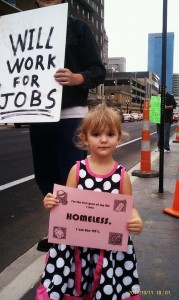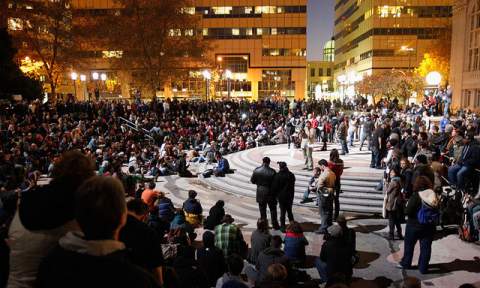Pacifism as Pathology – Book Review

Jewish resistance fighters. Their brave desperate action, under the worst of circumstances, still inflicted significant losses on the Germans. What would have been the result of a generalized policy of all-out resistance, from the start of the Nazi onslaught across Europe?
Submitted by stuartbramhall
PRESENTED BY ANTEMEDIUS
Pacifism as Pathology: Reflections on the Role of Armed Struggle in North America
(Book Review)
By Ward Churchill (2007 AK Press)
Pacifism as Pathology is a collection of essays centered around Ward Churchill’s original 1985 essay “Pacifism as Pathology: Notes on an American Pseudopraxis.” The premise of the essay is that the militant nonviolent stance assumed by the US progressive movement is based on irrational psychological reasons rather than strategic reasons or moral principle.
Viewpoints from a Range of Activists
[dropcap]T[/dropcap]he 2007 edition contains a preface by Derrick Jensen, who lays out compelling reasons for the necessity of “violence” in bringing about genuine political change in his 2006 book Endgame. Jensen’s argument, as in Endgame, is primarily ecological. Humankind is being systematically killed off by the capitalist class, via their poisoning of the air, water and food chain, as well as their heedless imposition of catastrophic climate change. Jensen poses the very reasonable question: are we willing to retaliate violently to save our own lives and those of our children and grandchildren?
 The next essay is Ed Mead’s preface to the 1998 edition of Pacifism as Pathology, immediately following an 18 year prison term as a result of armed actions (bombings of state and federal buildings in Washington State) conducted by the George Jackson Brigade. Based on his experiences, he arrives at the following conclusions: 1) pacifism as a strategy of achieving social, political and economic change can only lead to dead end liberalism – the most vicious and violent ruling class in history won’t give up privilege without a physical fight; 2) because 99.9% of practitioners of political violence will eventually confront death or imprisonment, it’s imperative that political violence be carried out in a manner calculated to win; and 3) although the George Jackson Brigade applied the tool of revolutionary violence when its use wasn’t appropriate, he feels pride that they erred on the side of making revolution instead of the alternative.
The next essay is Ed Mead’s preface to the 1998 edition of Pacifism as Pathology, immediately following an 18 year prison term as a result of armed actions (bombings of state and federal buildings in Washington State) conducted by the George Jackson Brigade. Based on his experiences, he arrives at the following conclusions: 1) pacifism as a strategy of achieving social, political and economic change can only lead to dead end liberalism – the most vicious and violent ruling class in history won’t give up privilege without a physical fight; 2) because 99.9% of practitioners of political violence will eventually confront death or imprisonment, it’s imperative that political violence be carried out in a manner calculated to win; and 3) although the George Jackson Brigade applied the tool of revolutionary violence when its use wasn’t appropriate, he feels pride that they erred on the side of making revolution instead of the alternative.
The book also contains an afterwards by Canadian Activist Mike Ryan describing his frustration after 20 years of nonviolent resistance as part of the Canadian peace movement – and his conclusion that violent resistance must be allowed as a tactic for genuine political change to occur.
Churchill’s Infamous Assault Rifle Workshop
[dropcap]C[/dropcap]hurchill explains, in his 1998 introduction, that "Pacifism as Pathology" was originally written in 1985 as part of a four year debate over a workshop “Demystification of the Assault Rifle” that he gave at a 1981 Radical Therapy conference. He was invited to give the workshop owing to an admission by many activists that their fear of weapons was chiefly responsible for their rejection of violence as a political strategy. The reaction of some conference participants was to pass a resolution banning similar workshops in the future, as well as the presence of firearms (except those of the police or military) at any Radical Therapy conference. Churchill was invited to write an article on his views for the magazine Issues in Radical Therapy, which was subsequently Xeroxed and distributed widely throughout North America. While Churchill acknowledges the right of all activists to personally reject violent strategies and tactics, he challenges the right of nonviolent proponents to condemn activists willing to embrace property destruction and/or armed self-defense among a diversity of strategies. As he points out, activists willing to engage in violent resistance wouldn’t dream of trying to force their views on nonviolent activists.
Armed Jewish Uprisings Under Nazi Occupation
For me, the most valuable part of the book is the first section about Bruno Bettelheim and Jewish armed uprisings, in the Warsaw and Bialystok ghettos and in numerous concentration camps during the second world war. This is an aspect of World War II history I was totally unaware if, as the work of Bettelheim and other scholars documenting armed Jewish resistance are carefully sanitized from the history textbooks served up to US high school and college students.
Bettelheim, who contrasts the Jews who resisted violently with the majority of Jews, who followed the Nazis passively to the camps and even to the gas chambers, makes a strong case for his belief that the persecution of the Jews was aggravated by the pervasive lack of fight back. He blames their failure to resist on strong psychological denial – a pathological need to cling to an illusion of “business as normal” – that ultimately overwhelmed their basic survival needs. The logical position would have been to accept the cold reality that their own lives were doomed and to use their deaths to save the life of other Jews by making the extermination more difficult. He points out that Jews had easy access to guns in 1930s and 1940s Germany, and there was no reason why every Jew that was arrested couldn’t take one or two SS officers with them.
Churchill describes how all the revolts inflicted significant damage on the Nazi machine. The revolt at Auschwitz killed 70 SS officers and destroyed the crematorium. Armed rebellions at Sorbibor and Reblinka were even more effective, and Sorbibor had to be closed following the uprising. There were also lesser insurrections at Kruszyna, Krychaw and Kopernik.
Militant Nonviolence: Racist, Deluded and Irrational
Churchill devotes the rest of the book to correcting historical distortions regarding Gandhi’s and Martin Luther King's nonviolent resistance movements (which have been totally whitewashed by the ruling elite); a brief historical overview of the ineffectiveness of nonviolence in contrast to campaigns incorporating violent resistance; an analysis of the inherent racism implicit in the dogmatic nonviolence promoted by white upper middle class activists; and an outline of the irrational psychological motivations underlying militant nonviolence.
Although Churchill couches his psychological analysis in much more polite terms than I would, he believes that some white upper middle class activists are deeply conflicted about whether they really want to dismantle capitalism and give up their position of privilege. Thus they adamantly reject any approach incorporating violent resistance, owing to its historical record of effectiveness.





